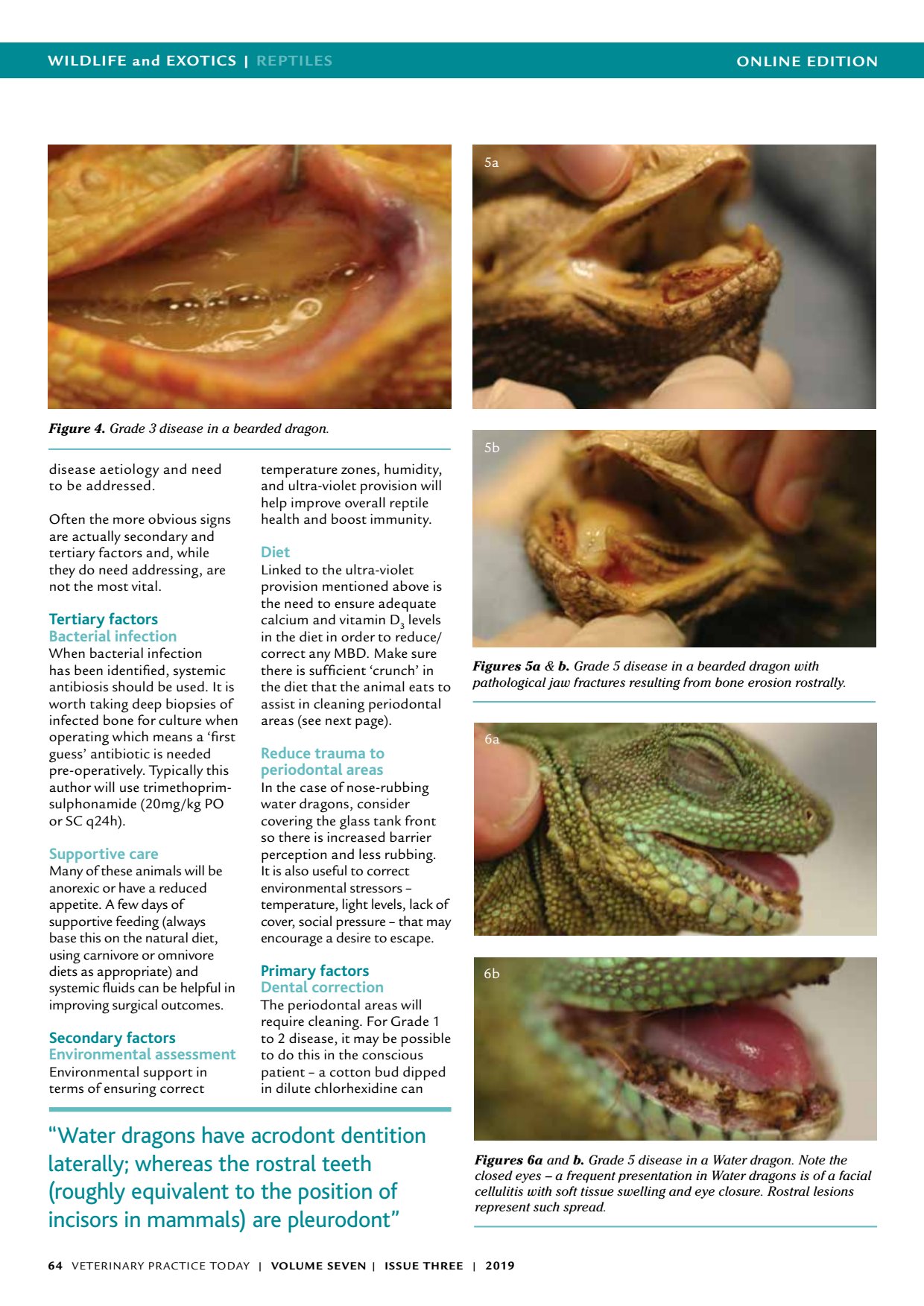Tertiary factors Bacterial
ONLINE EDITIONWILDLIFE and EXOTICS | REPTILES VETERINARY PRACTICE TODAY | VOLUME SEVEN | ISSUE THREE | 2019 64 disease aetiology and need to be addressed. Often the more obvious signs are actually secondary and tertiary factors and, while they do need addressing, are not the most vital. Tertiary factors Bacterial infection When bacterial infection has been identified, systemic antibiosis should be used. It is worth taking deep biopsies of infected bone for culture when operating which means a first guess antibiotic is needed pre-operatively. Typically this author will use trimethoprim- sulphonamide (20mg/kg PO or SC q24h). Supportive care Many of these animals will be anorexic or have a reduced appetite. A few days of supportive feeding (always base this on the natural diet, using carnivore or omnivore diets as appropriate) and systemic fluids can be helpful in improving surgical outcomes. Secondary factors Environmental assessment Environmental support in terms of ensuring correct temperature zones, humidity, and ultra-violet provision will help improve overall reptile health and boost immunity. Diet Linked to the ultra-violet provision mentioned above is the need to ensure adequate calcium and vitamin D 3 levels in the diet in order to reduce/ correct any MBD. Make sure there is sufficient crunch in the diet that the animal eats to assist in cleaning periodontal areas (see next page). Reduce trauma to periodontal areas In the case of nose-rubbing water dragons, consider covering the glass tank front so there is increased barrier perception and less rubbing. It is also useful to correct environmental stressors temperature, light levels, lack of cover, social pressure that may encourage a desire to escape. Primary factors Dental correction The periodontal areas will require cleaning. For Grade 1 to 2 disease, it may be possible to do this in the conscious patient a cotton bud dipped in dilute chlorhexidine can Figure 4. Grade 3 disease in a bearded dragon. Figures 5a & b. Grade 5 disease in a bearded dragon with pathological jaw fractures resulting from bone erosion rostrally. 5a 5b Water dragons have acrodont dentition laterally; whereas the rostral teeth (roughly equivalent to the position of incisors in mammals) are pleurodont 6a 6b Figures 6a and b. Grade 5 disease in a Water dragon. Note the closed eyes a frequent presentation in Water dragons is of a facial cellulitis with soft tissue swelling and eye closure. Rostral lesions represent such spread.
